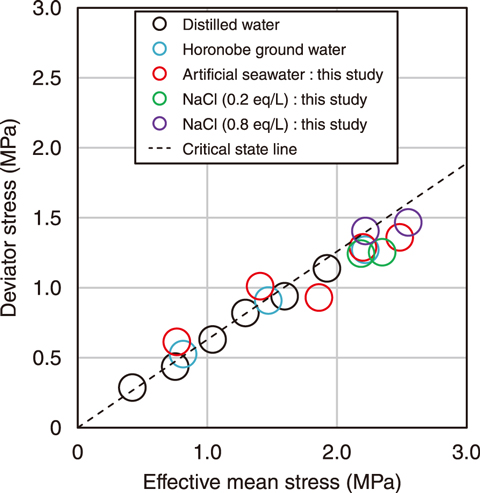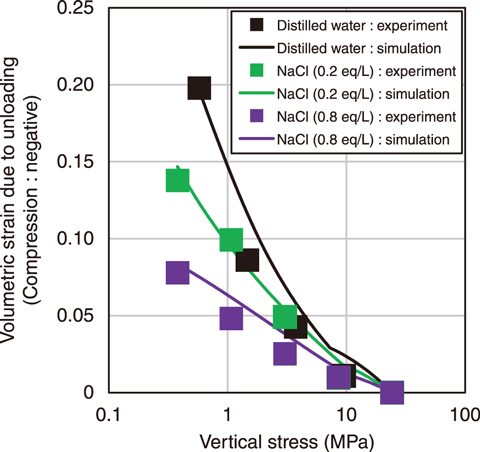
Fig.8-20 Consolidation undrained triaxial compression test results

Fig.8-21 Relationship between the vertical stress and volumetric strain
Bentonite is planned to be used as a buffer material in repositories for the geological disposal of radioactive waste. However, as the mechanical properties of bentonite depend on the salinity of the groundwater, the mechanical properties of the buffer material under various salinity conditions must be characterized. Furthermore, an appropriate mechanical constitutive model corresponding to the groundwater conditions and appropriate corresponding parameters should be selected to evaluate the mechanical behavior of the buffer material using numerical simulation techniques.
In this study, the applicability of the existing constitutive model to the buffer material under various salinity conditions was examined. The widely used modified Cam-clay (MCC) model was used as the constitutive model, as this model has been phenomenologically formulated based on the elastoplastic response under loading and unloading processes and deformation characteristics during shearing. Consolidation tests and consolidated undrained triaxial compression tests with pore water pressure measurements (CU test) were then conducted to understand these characteristics. In preparing the data sets for the consolidation and CU test under various salt concentration conditions, the CU test was discovered to have been conducted with different salinity conditions and thus did not have sufficient data. Based on these results and the existing consolidation test data, the differences in the mechanical properties of the buffer material under distilled water and saltwater conditions were clarified. Additionally, the applicability of this model under various salt concentration conditions was examined by comparing the simulated and experimental data.
No clear differences were present in the CU test results, as shown in Fig.8-20, thus confirming that the main difference in the mechanical properties of the buffer material under distilled water and saltwater conditions is the unloading behavior in the consolidation test, which is shown in Fig.8-21. Additionally, the relationship between the swelling index, which is a model parameter, and the equivalent ion concentration (eq/L) was defined so that the parameter values can be set according to the water condition. Furthermore, the simulated consolidated results using these parameters agreed well with the experimental data, thus confirming that the model could be applied to various salt concentration conditions (see Fig.8-21).
Future work will include the development of simulation methodologies for evaluating the mechanical behavior of bentonite that applies to more comprehensive site conditions and obtaining experimental data under groundwater conditions with variations in ion species other than NaCl.
This study was conducted as part of the project on “Development of enhancing the disposal system in the coastal regions (JFY2018)”, funded by the Agency for Natural Resources and Energy (ANRE), the Ministry of Economy, Trade and Industry (METI), Japan.
(Yusuke Takayama)